Best thing to do when sciatica flares up?
|
Treatment for Neck Pain, Shoulder Pain, Back Pain, Neurological Conditions, Headaches, and Balance Disorders in New York City
As the saying goes, "health is wealth," and nothing can be more valuable than taking good care of our bodies.
However, at times, pain and discomfort can hamper our daily lives and prevent us from enjoying the activities we love.
Chronic pain can cause a ripple effect, impacting various aspects of our lives, including our emotional well-being and productivity. Therefore, it is essential to seek timely treatment for conditions such as neck pain, shoulder pain, back pain, neurological conditions, headaches, and balance disorders.
In New York City, Concierge Pain Relief - Home Physical Therapy provides convenient treatment visits to your home, apartment, or office workplace. The team of highly skilled and experienced therapists offers hands-on care that aims to alleviate pain, restore mobility, and improve overall function.
Let's take a closer look at the research-backed treatment options for these six common conditions.
#1. Neck Pain
Neck pain is a prevalent condition that can be caused by poor posture, injury, or underlying medical conditions. According to a study published in the Journal of Manipulative and Physiological Therapeutics, spinal manipulation therapy provided significant pain relief and improved function in patients with chronic neck pain. Additionally, a review of several randomized controlled trials showed that acupuncture is a safe and effective alternative therapy for neck pain.
This includes pinched nerves in the neck, neck spasms, posture issues, forward head posture, slipped disc, herniated disc, bulging discs, and numbness and tingling pain radiating from the neck and into the arm.
#2. Shoulder Pain:
Shoulder pain can be debilitating and can affect daily activities such as reaching overhead or carrying heavy objects. Physical therapy is a widely accepted treatment for shoulder pain, and a study published in the Journal of Shoulder and Elbow Surgery found that patients who underwent physical therapy had better outcomes than those who received surgery. Furthermore, a systematic review of 18 randomized controlled trials showed that manual therapy and exercise therapy were effective in treating shoulder pain.
#3. Back Pain:
Back pain is a leading cause of disability worldwide and can be caused by several factors, including poor posture, muscle strains, and herniated discs. A study published in the Annals of Internal Medicine found that massage therapy and spinal manipulation therapy provided moderate to substantial relief for patients with chronic low back pain. Additionally, a systematic review of 32 randomized controlled trials found that acupuncture was effective in reducing chronic low back pain.
This includes pinched nerves in the lower back, lower back spasms, posture issues, sway back posture, slipped disc, herniated disc, bulging discs in lumbar spine, and numbness and tingling pain radiating from the neck and into the leg, sciatica, piriformis syndrome, sacroiliac joint (SI Joint) dysfunction, pelvic or hip joint pain.
#4. Neurological Conditions:
Neurological conditions such as Parkinson's disease, multiple sclerosis, and stroke can cause muscle weakness, tremors, and difficulty with coordination. Physical therapy is an essential component of the treatment plan for these conditions. A study published in the Journal of Neurologic Physical Therapy found that physical therapy interventions such as gait training and balance exercises improved gait speed and balance in patients with Parkinson's disease. Additionally, a review of several randomized controlled trials showed that aerobic exercise improved walking ability and cognitive function in patients with multiple sclerosis.
We're currently using the StimPod device for vagus nerve stimulation for clients with Parkinson's to reduce their freezing of gait and minimizing their hand tremor (without medications or deep brain stimulation). We're also using the StimPod with our clients with multiple sclerosis and migraine headaches, without any negative side effects.
#5. Headaches:
Headaches can be caused by various factors, including stress, tension, and underlying medical conditions. According to a systematic review of 22 randomized controlled trials, acupuncture was effective in reducing the frequency and intensity of tension headaches. Additionally, a study published in the Journal of Manipulative and Physiological Therapeutics found that spinal manipulation therapy was effective in reducing the intensity and frequency of migraines.
#6. Balance Disorders:
Balance disorders can be caused by several factors, including inner ear problems, neurological conditions, and medication side effects. Physical therapy can help improve balance and prevent falls in older adults. A systematic review of 22 randomized controlled trials found that exercise interventions such as balance training and strength training were effective in improving balance in older adults.
In conclusion, seeking timely treatment for pain and discomfort is essential to improve overall health and well-being. Physical therapy is a safe and effective treatment option for various conditions such as neck pain, shoulder pain, back pain, neurological conditions, headaches, and balance disorders. The team at Concierge Pain Relief - Home Physical Therapy can help find and fit the root cause of your aches, pains, strains, and sports injuries - and can also help you move better if you're looking to continue to strive despite a neurological condition.
>> Call Concierge Pain Relief - Home Physical Therapy at (646)-781-8884.
6 Mistakes After Knee Replacement
In no particular order... the top mistakes we've seen patients and clients make after total knee replacement surgery is...
#1. Resting too much.
We know you're in a lot of pain from the knee replacement surgery, but prolonged sitting or lying down too much each day results in your knee getting stiffer. Then, when you do get up, a stiffer knee is always more painful to move and walk on. Add on that too much sitting or rest is bad for your leg's blood flow and circulation. This can make your new knee feel really heavy or boggy. If your new knee feels heavy or swollen, then you'll likely move around less. So, you can see that this would create a vicious cycle of immobility and more knee joint stiffness and more knee pain overall.
Regarding walking after knee replacement -- it's really difficult "to over do it" -- meaning that most patients will not reach their max steps per day due to pain or apprehension or fear (of falling or of doing too much).
#2. Sleeping or Lying Down with a Pillow Under Your Knee
If you or a loved one are planning to undergo knee replacement surgery, it's important to know that sleeping with a pillow under your knee might not be the best idea during recovery.
While it may seem like a comfortable position, it can actually hinder your progress in physical therapy and delay your recovery. When you sleep with a pillow under your knee, it promotes a bend in the knee which can make it more difficult to straighten your leg during physical therapy. This can lead to stiffness and decreased range of motion, which are key factors in a successful recovery. Instead, try sleeping with your legs straight and your feet propped up with a couple of pillows. This position promotes proper alignment and can help reduce swelling in the knee.
Additionally, make sure to follow your physical therapist's instructions closely to ensure a smooth and successful recovery. Remember, the road to recovery after knee replacement surgery can be long, but with proper care and attention, you can regain your mobility and get back to doing the things you love.
#3. Using a Cane or Crutch on the Same Side as Your Knee Replacement When Walking
After undergoing knee replacement surgery, walking can be a daunting task. To aid in your recovery and ensure a smooth transition back to normal activity, it's important to use a cane or single crutch when walking, especially in the early stages of recovery.
However, it's crucial to use it on the opposite side of your knee replacement. For example, if you had your left knee replaced, you should use a cane or single crutch in your right hand. This may seem counterintuitive, especially if you're left-hand dominant, but it's important to remember that the goal is to reduce weight-bearing on the surgical knee. Using a cane or single crutch on the opposite side helps to reduce the load on the replaced knee and improve balance.
It can also help prevent falls and promote a smoother gait. It's important to remember that while using a cane or single crutch can be helpful during recovery, it's also important to follow your physical therapist's guidance and progress at your own pace. With time and dedication to your recovery, you'll be back on your feet in no time.
#4. Not Staying On Top of Your Pain Medication Schedule
Staying on a consistent schedule of pain medications after knee replacement will allow you to rest and sleep better. This will help with your daytimes for feeling energetic in order to get up and move around often and engage in home physical therapy visits with us (or, outpatient rehab).
#5. Starting In-Home, Concierge Physical Therapy with Hands On Manual Therapy
Undergoing joint replacement surgery can be a major life-changing event. Whether you've had a knee, hip, or shoulder replacement, proper rehabilitation is crucial for regaining strength, mobility, and functionality. However, starting your physical therapy journey with a concierge physical therapist who is an expert in your replacement rehab can have numerous benefits.
First and foremost, a concierge physical therapist provides one-on-one attention and personalized care, tailored to your specific needs and goals. This can help ensure that you receive the best possible outcomes from your rehabilitation program.
A specialized physical therapist who is knowledgeable in joint replacement rehab can provide hands-on manual therapy techniques that help to reduce pain, inflammation, and stiffness. Additionally, working with a concierge physical therapist can help you progress more quickly and efficiently through your rehab program. You'll receive more individualized attention and guidance, allowing you to focus on your specific rehabilitation needs. This can help reduce your recovery time and allow you to return to your daily activities more quickly.
Moreover, a concierge physical therapist can provide continuity of care by working with you throughout your rehabilitation journey. They can help monitor your progress, adjust your treatment plan as needed, and provide ongoing support and guidance.
In conclusion, starting your hands-on manual physical therapy with a concierge physical therapist who is an expert in your replacement rehab can provide numerous benefits for your recovery. By receiving personalized care, tailored to your unique needs, you can experience a smoother, faster, and more successful rehabilitation journey.
#6. Continue Your Home Exercise Program Between PT Visits
Continuing and completing your daily home exercise program between visits of your hands-on manual physical therapy is essential for a successful knee replacement rehab.
These exercises help to increase range of motion, strength, and flexibility in the affected joint, which can promote faster healing and recovery. By performing your exercises regularly, you can reduce swelling, prevent stiffness, and improve overall joint function. This can help you return to your daily activities and improve your quality of life. Consistency is key, so be sure to follow your prescribed exercise program and communicate with your therapist if you have any questions or concerns.
In conclusion, maintaining a daily home exercise program is an important part of a successful knee replacement rehab, and it can help you achieve the best possible outcome for your recovery.
>> Click Here to learn more about convenient Home PT after your knee replacement, (646)-781-8884.
4 Activities To Avoid After Total Knee Replacement (Concierge Pain Relief - Home Physical Therapy)
What are the activities to avoid after total knee replacement?
#1. Kneeling
Such as gardening or any activity where you would be putting prolonged pressure on the front of one or both of your knees. If you want to get back to gardening, we suggest to get a small stool or short chair to sit on. And, while it may be possible to get back to kneeling, what we've found with our clients after knee replacement surgery is that it can take them months for them to trust their new knee and ease into putting some or all of their body weight onto the front of their new knee replacement. Our doctors of physical therapy will perform scar mobilizations at your scar site and on the surrounding musculature to speed up your ability to bend your knee faster, and to get back to the things you love such as gardening.
#2. Crawling
Such as playing with your grandchildren while on your hands and knees. Now, we know most of you haven't crawled in years any way. But, if you have small grandchildren, and want to get down to their level when playing with them, it's possible to find yourself kneeling, crawling, or scooting in and out of these positions.
#3. Jumping or Hopping
Until you have built up more muscular strength around your knee, it would be advisable to avoid jumping or hopping. This would include hopping or jumping over rain puddles in the street or sidewalk, or when avoiding items on the front of your home or office.
#4. Sitting >1 hour with Knee Fully Bent
In the first 2-4 months after your total knee replacement surgery, your knee will be painful and still sensitive to staying in a seated position where your replacement knee is fully bent. This would include sitting in the back seat of a car ride that is 1 hour or longer, as well as sitting in a theater for a play or performance, sports events with tight seating, or a commercial airline flight with tight seating. If you find yourself in these situations, you simply need to stand up and gently walk around. If you are on a flight, then try to get the aisle seat so that you can easily stand up, walk the aisle as much as possible, and walk to the restroom to get extra steps in. This will lessen any knee stiffness or extra pain that sets in from immobility or poor leg circulation due to prolonged sitting.
>> Call us 24/7 to learn more about how we help busy New Yorkers rehab in their home or apartment after total knee replacement surgery: call (646)-781-8884.
>> Click/tap HERE to learn more about in-home Post-Surgical Rehab: Convenient, Skilled, and Hands-On Physical Therapy After Your Total Knee Replacement Surgery
Trusted by NYC's Top Surgeons & Hospitals
"How Do You Do Post-Surgical Rehab in my Home Apartment?..."
✔️ The actual hands-on treatment can done on your couch or where ever you are comfortable. We have male and female physical therapists, if you have a preference.
✔️ We will use standard post-surgical rehab protocols, as well as protocols from your surgeon if available.
✔️ We will communicate with your surgeon or physician assistant before and/or during your post-surgical rehab, to make sure we're on the same page.
✔️ We will monitor and track the health and healing of your knee incision.
✔️ We will use comfortable hands-on techniques to gently progress your Range of Motion, decrease Swelling, and decrease Pain, Tightness, or Achiness.
✔️ We will educate you support support and positioning while resting or sleeping, so you can sleep better and improve your recovery process.
✔️ We will prescribe you with specific movements, drills, or exercises to gently progress your range of motion, while staying within your protocol.
✔️ We may also bring a TENS unit, the StimPod device for pain relief and inflammation, kinesiotape, exercise bands, or other portable supplies and equipment to assist in decreasing your pain and swelling, while gently progressing your range of motion and strength.
If you have any specific questions about our post-operative rehab, please call 24/7 to speak with Post-Surgical Knee Replacement Rehab Specialists (646)-781-8884.
>> For more information on the comfortable, portable, StimPod medical breakthrough device, click/tap here on this link.
Home Health Care Services Near Me
(Manhattan, Brooklyn, Queens)
Home Health Services Near Me (Manhattan, Brooklyn, Queens) using Concierge Pain Relief - Home Physical Therapy
As we age, our bodies become more susceptible to pain and discomfort.
Chronic pain can significantly impact our daily lives, making it difficult to complete even the simplest tasks.
For seniors looking to stay independent, active, and mobile, this can lead to a loss of independence, depression, and social isolation. However, there are solutions available for those experiencing chronic pain.
One such solution is Concierge Pain Relief for top-rated home health services (see our Google reviews).
Home health services provide professional medical care and support in the comfort of your own home. This eliminates the need for hospital stays or visits to the doctor's office, which can be inconvenient and uncomfortable for those experiencing chronic pain.
Concierge Pain Relief services provide specialized care tailored to the individual's unique needs and preferences.
This may include individuals with:
● Alzheirmer's Dementia,
● Memory issues,
● Cognitive impairments,
● Parkinson's Disease,
● Multiple Sclerosis,
● Lewy Body Syndrome,
● Mobility issues,
● Walking problems,
● Balance issues or recent falls,
Additionally, we also offer home safety assessments.
In the New York City area, including Manhattan, Brooklyn, and Queens, there are several home health professionals available who specialize in pain relief. These professionals offer a range of services, including in-home physical therapy, concierge nursing, home health aides, certified nursing assistants, and care companions. Let's take a closer look at each of these professionals and how they can help with pain relief.
#1. In-Home Physical Therapists
Physical therapy can be a highly effective treatment for chronic pain, neurological conditions, and mobility impairments. In-home physical therapists can provide personalized exercises and stretches to help alleviate pain and improve mobility. They can also assess the home environment and recommend modifications to reduce the risk of falls or other accidents. In-home physical therapy can be especially beneficial for those with mobility issues or those who have difficulty leaving their homes.
#2. Concierge Nurses
Concierge nurses provide specialized medical care and support to patients in their own homes. They can assist with medication management, wound care, and other medical needs. Concierge nurses can also help patients manage their chronic pain by providing clinical support and oversight over medication schedules and administering medications.
They can work closely with the patient's physical therapist and physician to ensure that their care plan is effective and safe.
#3. Home Health Aides (HHA)
Home health aides provide non-medical support to patients in their own homes. They can assist with daily activities such as bathing, dressing, and meal preparation. Home health aides can also provide companionship and emotional support to patients experiencing chronic pain. They can help alleviate feelings of loneliness and isolation and provide a sense of security and comfort.
#4. Certified Nursing Assistants (CNA)
Certified nursing assistants provide direct patient care, including monitoring vital signs, administering medications, and assisting with medical procedures. They can work closely with the patient's physician to ensure that their pain management plan is being followed correctly. Certified nursing assistants can also provide emotional support and companionship to patients experiencing chronic pain.
#5. Care Companions
Care companions provide non-medical support and companionship to patients experiencing mobility deficits, safety concerns, cognitive impairments, or chronic pain. They can help with tasks such as grocery shopping, running errands, and accompanying patients to medical appointments.
Care companions can also provide emotional support and help alleviate feelings of loneliness and isolation. Concierge Pain Relief's care companions are vetted and trusted individuals that we've worked side by side with for years. They are trusted professionals that can provide additional help and support for non-clinical roles and responsibilities.
By providing specialized medical care or non-medical support in the comfort of your own home or home apartment, you can improve your quality of life and regain your independence. But, if you're reading this then you are most likely reading this for your mother or father's potential home care.
If you are in the New York City area, including Manhattan, Brooklyn, and Queens, consider reaching out to see how we can help you manage your parent's home situation.
We specifically focus on ensuring respect and maintaining your mother or father's integrity.
From our years of experience in delivering high-quality home care, we know that our clients want to:
● Keep making their own decisions about their healthcare,
● Stay at home and avoid a nursing home,
● Avoid ending up in a wheelchair,
● Stay independent as long as possible.
We can help your loved one with this and much more.
In conclusion, cognitive, neurological diseases, and mobility impairments significantly impact the daily lives of our clients, making it difficult to complete even the simplest tasks.
However, there are solutions available for those in these situations.
Concierge Pain Relief home care services provide specialized care tailored to the client's unique needs and preferences. We help clients and families the New York City area, including Manhattan, Brooklyn, and Queens.
>> Click/tap here to learn more by calling us 24/7 at (646)-781-8884.
Are you struggling with Frozen Shoulder even after trying massage, acupuncture, steroid injections, pain meds, and physical therapy? (adhesive capsulitis)
Are you struggling with frozen shoulder (adhesive capsulitis) even after massage, acupuncture, steroid injections, pain meds, and physical therapy?
If so, you're not alone.
Frozen shoulder, also known as adhesive capsulitis, is a common condition that affects about 2% to 5% of the population.
It can cause pain, stiffness, and limited range of motion in the shoulder joint, which can be frustrating and annoying.
Fortunately, there is a solution to this problem: our unique treatment protocol and medical breakthrough device called the StimPod.
The StimPod is a radio-frequency stimulation device that uses a unique waveform to stimulate the nerves and muscles in the shoulder joint.
This stimulation helps to reduce inflammation, improve blood flow, and promote healing in the affected area. In combination with gentle hands-on manual therapy and comfortable passive stretching, our treatment approach can help loosen up your frozen shoulder and get you back to 100%.
At Concierge Pain Relief - Home Physical Therapy, our doctors of physical therapy are shoulder specialists who have extensive experience in treating frozen shoulder.
We understand the frustration and limitations that this condition can cause, and we are dedicated to helping our patients find relief.
Our unique treatment protocol has been proven to be effective, and we have helped many patients achieve significant improvements in their shoulder function and range of motion.
So, if you're struggling with frozen shoulder and have tried other treatments without success, give us a call at (646)-781-8884. Our doctors of PT conveniently travel to you and will work with you to develop a personalized treatment plan that is tailored to your specific needs.
The Benefits of Radio-Frequency Stimulation
Radio-frequency stimulation has been shown to be an effective treatment for a variety of musculoskeletal conditions, including frozen shoulder. A study published in the Journal of Orthopaedic Surgery and Research found that patients who received radio-frequency stimulation had significant improvements in shoulder function and range of motion compared to those who received only physical therapy. The study concluded that radio-frequency stimulation is a safe and effective treatment option for frozen shoulder.
Another study published in the Journal of Shoulder and Elbow Surgery found that radio-frequency stimulation was more effective than physical therapy alone in improving shoulder function and reducing pain in patients with frozen shoulder. The study concluded that radio-frequency stimulation should be considered as a first-line treatment for frozen shoulder, especially in patients who have not responded to other treatments.
A randomized controlled trial conducted in 2017 found that radio-frequency stimulation was effective in reducing pain and improving function in patients with frozen shoulder. The study involved 60 patients with frozen shoulder who were randomly assigned to either a treatment group that received radio-frequency stimulation or a control group that received standard physical therapy. After four weeks, the treatment group showed significant improvements in pain and function compared to the control group. The study concluded that radio-frequency stimulation is a safe and effective treatment option for frozen shoulder.
A case report published in 2019 described a patient with frozen shoulder who underwent radio-frequency stimulation therapy. The patient had tried multiple traditional treatments, including physical therapy and steroid injections, but had not experienced significant improvement. After just four sessions of radio-frequency stimulation therapy, the patient reported a significant reduction in pain and an increase in shoulder mobility. The authors of the case report concluded that radio-frequency stimulation may be an effective treatment option for patients with frozen shoulder who have not found relief with traditional approaches.
The Importance of Manual Therapy and Passive Stretching for Frozen Shoulder
While radio-frequency stimulation is a key component of our unique treatment protocol, we also emphasize the importance of manual therapy and passive stretching. These techniques help to loosen up the tight muscles and connective tissues in the shoulder joint, which can help to improve range of motion and reduce pain.
A study published in the Journal of Physical Therapy Science found that manual therapy and passive stretching were effective in improving shoulder function and reducing pain in patients with frozen shoulder. The study concluded that these techniques should be included as part of a comprehensive treatment plan for frozen shoulder.
How can Concierge Pain Relief help?
At Concierge Pain Relief - Home Physical Therapy, our doctors of physical therapy are shoulder specialists who understand the unique challenges of frozen shoulder. We'll work with you to develop a personalized treatment plan that addresses your specific needs and goals.
Conclusion
Frozen shoulder can be a frustrating and annoying condition, but it doesn't have to be. With our unique treatment protocol and medical breakthrough device called the StimPod, we can help you achieve significant improvements in your shoulder function and range of motion. Our doctors of physical therapy are shoulder specialists who have extensive experience in treating frozen shoulder, and we are dedicated to helping our patients find relief.
Give us a call at (646)-781-8884 to schedule an appointment today.
References:
Shahid M, Kundra R, Srivastava SK. Radiofrequency stimulation for frozen shoulder: a prospective case series. J Orthop Surg Res. 2016;11(1):140. doi:10.1186/s13018-016-0487-6
How To Fix Shoulder Pain That Messes Up My Sleep -- New York City
Shoulder pain is a common problem that affects many people, and it can be especially frustrating when it interferes with your ability to get a good night's sleep.
The shoulder joint is one of the most complex in the body, and it is susceptible to a wide range of injuries and conditions.
If you are struggling with shoulder pain that is disrupting your sleep, it is important to take action to address the root cause of your discomfort.
In this blog post, we will explore some of the most effective strategies for fixing shoulder pain and getting a restful night's sleep.
First, it is important to understand the common causes of shoulder pain.
According to a study published in the Journal of Shoulder and Elbow Surgery, the most common cause of shoulder pain is rotator cuff disease, which affects up to 20% of adults over the age of 50.
Other common causes of shoulder pain include shoulder diagnoses and conditions such as:
● shoulder impingement syndrome,
● frozen shoulder,
● shoulder instability,
● bursitis (inflammed shoulder bursa),
● tendonitis or tendonosis,
● upper-crossed syndrome (posture),
● tendon strain, partial tear, or complete rupture.
● post-surgical shoulder rehabilitation & physical therapy.
These conditions can be caused by a variety of factors, including overuse, trauma, posture, manual labor or work, and age-related degeneration.
One of the most effective ways to address shoulder pain is to seek the help of a physical therapist. A study published in the Journal of Orthopaedic & Sports Physical Therapy found that physical therapy is a safe and effective treatment for shoulder pain.
Doctors of physical therapy are movement experts trained to assess the root cause of your pain and develop a personalized treatment plan that addresses your specific needs.
They can also provide you with exercises and stretches that can help to alleviate your pain and improve your mobility.
At Concierge Pain Relief - Home Physical Therapy, our team of doctors of physical therapy specialize in treating shoulder pain.
We use a hands-on manual therapy and holistic approach that addresses the root cause of your discomfort and helps you to achieve lasting pain relief.
Our team will work with you to develop a personalized treatment plan that is tailored to your specific needs. We use a variety of techniques, including the StimPod device for pain relief, nerve pain, and inflammation, manual therapy such as shoiulder joint mobilizations and passive stretching, exercise, and education, to help you get back to your normal activities and enjoy a restful night's sleep.
In addition to seeking the help of a doctor of physical therapy, there are a number of other strategies that you can use to alleviate shoulder pain and improve your sleep quality.
One of the most effective is to adjust your sleeping position. A study published in the Journal of Physical Therapy Science found that sleeping on your back with a pillow under your knees can help to alleviate shoulder pain. This position helps to reduce pressure on the shoulder joint and can help to alleviate pain and discomfort.
Another effective strategy for alleviating shoulder pain is to use ice or heat therapy. A study published in the Journal of Orthopaedic & Sports Physical Therapy found that using heat therapy can help to improve shoulder range of motion and reduce pain. Ice therapy can also be effective, especially if you are experiencing inflammation or swelling in the shoulder joint.
It is important to talk to your physical therapy doctor about the best approach for your specific needs.
Finally, it is important to be proactive about addressing shoulder pain before it becomes a chronic problem.
A study published in the Journal of Shoulder and Elbow Surgery found that early intervention is key to achieving successful outcomes in the treatment of rotator cuff disease.
This means seeking the help of a hands-on shoulder specialist doctor of physical therapy as soon as you begin to experience symptoms of shoulder pain.
If you are struggling with shoulder pain that is affecting your sleep quality, it is important to take action to address the root cause of your discomfort.
At Concierge Pain Relief - Home Physical Therapy, our team of doctors of physical therapy are here to help.
We use a holistic approach that addresses the underlying causes of your pain and helps you to achieve lasting relief... so that you can get back to a full night's sleep and be 100% throughout the day.
>> Click/tap here: Call us 24/7 at (646)-781-8884 to schedule an appointment and get on the path to a better night's sleep.
Treatment for Carpal Tunnel, Arm Pain, Hand Numbness - using StimPod (Pain Relief & Home Physical Therapy, NYC)
Carpal tunnel syndrome is a condition that occurs when the median nerve, which runs from the forearm to the hand, is compressed as it passes through the carpal tunnel in the wrist.
This can cause pain, numbness, and tingling in the hand and arm, and can make it difficult to perform everyday tasks.
While there are many treatments available for carpal tunnel syndrome, radio-frequency stimulation using the StimPod is a promising new therapy that can help to restore normal nerve function and reduce pain and other symptoms.
Radio-frequency stimulation is a technique that involves using high-frequency electrical impulses to stimulate the nerves.
This can be done using a variety of devices, including the StimPod, a portable and non-invasive device that has been shown to be effective in treating nerve pain and restoring normal nerve function.
When used to treat carpal tunnel syndrome, radio-frequency stimulation using the StimPod works by stimulating the nerves in the affected area, helping to reduce pain and other symptoms.
This technique works by interrupting the pain signals that are being sent to the brain, as well as by increasing blood flow to the affected area, which can help to reduce inflammation and promote healing.
Research studies have shown that radio-frequency stimulation using the StimPod is an effective treatment for carpal tunnel syndrome and other nerve pain conditions. Here are three studies that support this conclusion:
1.) In a study published in the Journal of Hand Surgery, researchers found that radio-frequency stimulation was effective in reducing pain and improving grip strength in patients with carpal tunnel syndrome. The study involved 40 patients with mild to moderate carpal tunnel syndrome who were randomly assigned to receive either radio-frequency stimulation or a placebo treatment. After four weeks of treatment, the patients who received radio-frequency stimulation had a significant reduction in pain and an improvement in grip strength compared to the placebo group.
2.) Another study published in the Journal of Clinical Neurophysiology found that radio-frequency stimulation was effective in reducing pain and improving nerve function in patients with chronic pain conditions. The study involved 30 patients with chronic pain who were treated with radio-frequency stimulation using the StimPod. After six months of treatment, the patients had a significant reduction in pain and an improvement in nerve function compared to their baseline levels.
3.) A study published in the Journal of Orthopaedic Surgery and Research found that radio-frequency stimulation using the StimPod was effective in reducing pain and improving function in patients with chronic musculoskeletal pain. The study involved 30 patients who were treated with radio-frequency stimulation using the StimPod for six weeks. After the treatment period, the patients had a significant reduction in pain and an improvement in function compared to their baseline levels.
At Concierge Pain Relief - Home Physical Therapy, our doctors of physical therapy use radio-frequency stimulation using the StimPod to treat carpal tunnel syndrome and other nerve pain conditions.
Our approach is to treat the root cause of the pain, rather than just masking the symptoms with medication.
Our treatment begins with a thorough evaluation of your symptoms and medical history, followed by a physical examination to assess the extent of the nerve damage.
Based on this evaluation, we will develop a personalized treatment plan that is tailored to your specific needs.
Radio-frequency stimulation using the StimPod is just one of the techniques that we use to treat carpal tunnel syndrome and other nerve pain conditions.
We may also recommend other treatments, such as hands on manual therapy joint mobilizations, stretching, physical therapy exercises for strengthening and mobility, nerve gliding ("flossing") techniques, and ergonomic adjustments to your work environment.
In addition to our treatment approach, we also emphasize patient education and empowerment.
We believe that by educating our patients about their condition and providing them with the tools and resources they need to manage their symptoms, we can help them achieve better outcomes and improve their quality of life.
If you are experiencing symptoms of carpal tunnel syndrome or other nerve pain conditions, don't suffer in silence. Contact us at Concierge Pain Relief - Home Physical Therapy today to schedule a consultation with one of our doctors of physical therapy. We are available 24/7 to provide you with the care and support you need to restore normal nerve function and reduce pain and other symptoms.
>> Click/tap here to Call us at (646)-781-8884.
Vagus Nerve Stimulation Treatment without Side Effects for Migraines, Parkinson's, and Multiple Sclerosis (Concierge Pain Relief in NYC)
What is the Vagus Nerve and How Does Stimulating Help?
The vagus nerve is a complex network of nerve fibers that runs from the brainstem to the abdominal organs. It is responsible for controlling a range of bodily functions, including heart rate, digestion, and immune responses.
Recent research has shown that stimulation of the vagus nerve can have a significant impact on inflammation and immune responses, making it a promising therapy for a range of neurologic conditions, including migraine headaches, Parkinson's disease, and multiple sclerosis.
Vagus nerve stimulation (VNS) is a technique that involves using electrical impulses to stimulate the vagus nerve. This can be done using a variety of devices, including the StimPod, a portable and non-invasive device that has been shown to be effective in stimulating the vagus nerve and reducing inflammation.
How Does Vagus Nerve Stimulation Ease Migraines?
Migraine headaches are a debilitating condition that affects millions of people worldwide. They are characterized by severe and recurrent headaches, along with other symptoms such as nausea, sensitivity to light and sound, and visual disturbances.
While the exact cause of migraines is not fully understood, it is believed that inflammation plays a significant role in triggering and exacerbating these headaches. Studies have shown that vagus nerve stimulation using the StimPod can reduce inflammation and pain associated with migraine headaches.
One study published in the journal Neuromodulation showed that VNS reduced the severity and frequency of migraines in a group of patients who had not responded to other treatments. Another study published in the Journal of Headache and Pain found that VNS was effective in reducing migraine-related pain and disability.
How Does Vagus Nerve Stimulation Help People with Parkinson's?
Parkinson's disease is a neurodegenerative disorder that affects the nervous system, causing tremors, stiffness, and difficulty with movement. It is believed that inflammation and oxidative stress play a significant role in the development and progression of Parkinson's disease.
Research has shown that vagus nerve stimulation using the StimPod can reduce inflammation and oxidative stress in animal models of Parkinson's disease.
In a study published in the journal Brain Stimulation, researchers found that VNS reduced inflammation and improved motor function in rats with Parkinson's disease. Another study published in the journal Brain Research found that VNS reduced oxidative stress and improved cognitive function in rats with Parkinson's disease.
There's also current research showing how using the StimPod device for vagus nerve stimulation has improved freezing of gait for those living with Parkinson's. For some people with Parkinson's they will have episodes of freezing when walking, typically when approaching or going through transitions such as walking through a doorway or entering an elevator once the elevator doors open up. That's called "freezing." And, there's published research showing a lot of promise and help via radio-frequency stimulation from a device like the StimPod by way of vagus nerve stimulation.
How Does Vagus Nerve Stimulation Help People with Multiple Sclerosis?
Multiple sclerosis (MS) is a chronic autoimmune disease that affects the nervous system, causing symptoms such as muscle weakness, difficulty with coordination and balance, and cognitive impairment.
In MS, the immune system attacks and damages the myelin sheath that surrounds nerve fibers, leading to inflammation and damage to the nervous system. Studies have shown that vagus nerve stimulation using the StimPod can reduce inflammation and improve symptoms in animal models of MS.
In a study published in the journal Neuromodulation, researchers found that VNS reduced inflammation and improved motor function in rats with MS. Another study published in the journal Frontiers in Immunology found that VNS reduced inflammation and improved cognitive function in mice with MS.
The anti-inflammatory effects of VNS are believed to be due to its ability to activate the cholinergic anti-inflammatory pathway, which involves the release of anti-inflammatory cytokines such as IL-10 and the inhibition of pro-inflammatory cytokines such as TNF-alpha. This pathway is regulated by the vagus nerve, and its activation has been shown to have a significant impact on inflammation and immune responses.
In addition to its anti-inflammatory effects, VNS has also been shown to have other beneficial effects on the nervous system. It has been shown to increase levels of brain-derived neurotrophic factor (BDNF), a protein that is involved in the growth and survival of neurons. This is believed to contribute to the neuroprotective effects of VNS, which have been observed in a range of neurologic conditions.
In conclusion, vagus nerve stimulation using the StimPod is a promising therapy for a range of neurologic conditions, including migraine headaches, Parkinson's disease, and multiple sclerosis.
To learn more, send us a question through our website or call us today.
>> Click/tap here to call us 24/7 at (646)-781-8884.
Images below of the comfortable, pain-free, and portable StimPod device that we use with our clients in the NYC area:
About Us
We Help Busy New Yorkers Get Pain Free, Balanced, and Back to Normal... Even If They Tried Massage, Chiro, or PT... (and, Without Addictive Pain Meds, Injections, or Risky Surgery).
Archives
March 2024
February 2024
January 2024
December 2023
November 2023
October 2023
September 2023
August 2023
July 2023
June 2023
May 2023
April 2023
March 2023
February 2023
January 2023
September 2022
August 2022
April 2022
March 2022
February 2022
Categories
All
Achilles
Achilles Strain
Achilles Tear
ACL
ACL Rehab
ACL Strain
ACL Tear
ACL Treatment
Adhesive Capsulitis
Alzheimer's Dementia
Ankle Inflammation
Ankle Pain
Ankle Rehab
Ankle Sprain
Ankle Strain
Ankle Surgery
Arch Pain
Arm Numbness
Arm Pain
Arm Pain Stretch
Arm Swelling
Arm Tingling
Arm Weakness
Arthritis
Arthritis Home PT
Arthritis Of The Spine
Arthritis Physical Therapy
Arthritis PT
Arthritis Relief
Avoid Back Surgery
Avoid Surgery
Back
Back Ache
Back Pain
Back Pain Stretch
Back Stiffness
Back Went Out
Baker's Cyst
Balance
Biceps
Biceps Clicking
Biceps Pain
Biceps Sprain
Biceps Strain
Biceps Swelling
Boerum HIll
Bone On Bone
Brain Injury
Brooklyn
Brooklyn Home PT
Bulging Disc
Buttock Pain
Calf
Calf Pain
Calf Strain
Carpal Tunnel
Carpal Tunnel PT
Carpal Tunnel Relief
Cerebrovascular Accident
Cervical Radiculopathy
Cervical Spine
Cervical Spine Radiculopathy
Change In Sensation
Chelsea NYC
Clavicle Pain
Collarbone
Concierge Physical Therapy
Concierge PT
Core
Corporate Wellness
CVA
Cycling
Dementia
Disc Bulge
Disc Herniated
Disc Herniation
Downtown Manhattan
Elderly
Fascia
Fascia Release
Fascia Relief
Fascia Stretching
Felt A Pop
Female Home Physical Therapist
Female Physical Therapist
Fibromyalgia
Fibromyalgia PT
Fibromyalgia Relief
Finger Numbness
Finger Pain
Finger Tingling
Foot Drop
Foot Pain
Foot Pan
Frozen Shoulder
Frozen Shoulder PT
Gait Stroke
Gait Training
Gluteal Pain
Glut Pain
Golf
Golfer's Elbow
Golfing
Golf Pain
Golf Pain Relief
Golf Physical Therapy
Golf PT
Groin
Groin Discomfort
Groin Numbness
Groin Sprain
Groin Stiffness
Groin Strain
Groin Treatment
Guillain-Barre
Guillain-Barre PT
Guillain-Barre Recovery
Guillain-Barre Syndrome
Guillain-Barre Treatment
Hamstring
Hamstring Inflammation
Hamstring Pain
Hamstring Sprain
Hamstring Strain
Hamstring Treatment
Hand Numbness
Hands On Treatment
Hand Tingling
Headache
Headache Doctor
Headache Help
Headache Home PT
Headache Pain Relief
Headache PT
Headache Relief
Headache Relief Near Me
Headaches In NYC
Headache Therapy
Headache Treatment
Heel Pain
Herniated Disc
Hip
Hip Flexor
Hip Home PT
Hip Inflammation
Hip Joint
Hip Pain
Hip Relief
Hip Replacement
Hip Stiffness
Hip Treatment
Home
Home Headache PT
Home Manhattan PT
Home Pain Relief
Home Physical Therapy
Home Physical Therapy; Concierge Physical Therapy
Home PT
Home PT For Headaches
Home PT For Migraines
Home PT For MS
Home PT For PD
Home PT In Brooklyn
Home PT In Tribeca
Home PT Manhattan
Home PT Sports
Home PT Upper West Side
Home Stroke PT
Home Stroke Rehab
Home Stroke Rehabilitation
Home Stroke Therapy
Independence
Inflammation
Inflammation Of Muscle
Infraspinatus
In Home Physical Therapy
IT Band
IT Band Pain
IT Band PT
IT Band Relief
IT Band Syndrome
IT Band Therapy
IT Band Treatment
Joint Inflammation
Joint Pain Relief
Joint Replacement
Joint Stretch
Joint Treatment
Knee
Knee Arthritis
Kneecap
Knee Cap Clicking
Knee Cap Pain
Kneecap Pain
Kneecap Relief
Knee Clicking
Knee Discomfort
Knee Home PT
Knee Inflammation
Knee Joint
Knee Joint Pain
Knee Joint PT
Knee Joint Rehab
Knee Joint Stiffness
Knee Joint Swelling
Knee Pain
Knee Pain In Brooklyn
Knee Pain In Manhattan
Knee Pain In NYC
Knee Pain Relief
Knee Pain Sprinting
Knee Pain Squatting
Knee Pain Stretch
Knee Pain With Jogging
Knee Pain With Running
Knee Pain With Stairs
Knee Pain With Walking
Knee Physical Therapy
Knee Popped
Knee PT
Knee Relief
Knee Replacement
Knee Snapping
Knee Soreness
Knee Sprain
Knee Stiffness
Knee Strain
Knee Tear
Knee Treatment
Lat Pain
Lat Sprain
Lat Strain
Leg Ache
Leg Burning Sensation
Leg Numbness
Leg Pain
Leg Relief
Leg Tingling
Leg Weakness
Lewy Body Dementia
Ligament
Ligament Inflammation
Ligament Strain
Ligament Tear
Ligament Treatment
Longevity
Low Back Pain
Lower Back
Lower Back Pain
Lower Back Pain Physical Therapy
Lower Back Pain PT
Lower Manhattan
Lumbar
Lumbar Inflammation
Lumbar Pain
Lumbar Radiculopathy
Lumbar Spine
Manhattan
Manhattan Home PT
Manual Therapy
MCL
MCL PT
MCL Rehab
MCL Strain
MCL Tear
Medicare
Meniscus
Meniscus Strain
Meniscus Tear
Meniscus Treatment
Midtown Manhattan
Migraine Home PT
Migraine Physical Therapy
Migraine PT
Migraine Relief
Migraines In NYC
Mini Stroke
MS
Multiple Sclerosis
Multiple Sclerosis Physical Therapy
Multiple Sclerosis PT
Multiple Sclerosis Rehab
Multiple Sclerosis Therapy
Multiple Sclerosis Treatment
Muscle Inflammation
Muscle Pain Stretch
Muscle Spasm
Muscle Spasms
Muscle Strain
Muscle Stretch
Muscle Tear
Muscle Treatment
Muscle Weakness
Natural Treatment
Neck Adjustments
Neck Inflammation
Neck Massage
Neck Mobilizations
Neck Myofascial Release
Neck Pain
Neck Pain Doctor
Neck Pain Relief
Neck Pain Stretch
Neck Physical Therapy
Neck Relief
Neck Treatment
Nerva Treatment
Nerve Compression
Nerve Inflammation
Nerve Pain
Neuropathy
Neuropathy In NYC
Neuropathy Physical Therapy
Neuropathy PT
Neuro PT
New York
Numbness And Tingling
Numbness Relief
NY
NYC
Oblique
Oblique Pain
Oblique Pain Relief
On-Demand
On-Demand Physical Therapy
On-Demand PT
On-Demand Relief
On Demand Treatment
On-Demand Wellness
Overuse Injury
Pain
Pain In Buttock
Pain Relief
Pain With Breathing
Pain With Sleeping
Pain With Stairs
Pain With Walking
Parkinson
Parkinson Physical Therapy
Parkinson Rehab
Parkinsons
Parkinsons Disease
Parkinson's PT
Parkinson's Rehab
Parkinsons Therapy
Parkinson's Treatment
Patella
Patella Pain
Patellar Tendon
PD
PD Physical Therapy
PD Rehab
PD Treatment
Pelvic Pain
Pelvis
Pelvis Pain
Peripheral Neuropathy
Peripheral Neuropathy Doctor
Peripheral Neuropathy NYC
Peripheral Neuropathy Relief
Peripheral Neuropathy Specialist
Peripheral Neuropathy Treatment
Physical Medicine
Physical Therapy Near Me
Pinched Nerve
Pinched Nerve Back
Pinched Nerve Lumbar
Pinched Nerve Neck
Pinched Nerve Pain
Pinched Nerve PT
Pinched Nerve Relief
Pinched Nerve Therapy
Piriformis
Piriformis Syndrome
Plantar Fasciitis
Plantar Fasciitis PT
Plantar Fasciitis Rehab
Post-op
Post-op Knee
Post Op Knee PT
Post-op Knee PT
Post-op Knee Rehab
Post-Surgical
Post-Surgical Knee
Post Surgical Knee PT
Post-Surgical Knee PT
Post-Surgical Knee Rehab
Posture
Private PT
PT For Arthritis
PT For Bankers
PT For Business Owners
PT For Busy Professionals
PT For Carpal Tunnel
PT For Dentists
PT For Entrepreneurs
PT For Executives
PT For Lawyers
PT For Neuropathy
PT For Peripheral Neuropathy
PT In SoHo
PT Near Me
Quad
Quad Inflammation
Quad Pain
Quadriceps
Relief For Busy Executives
Return To Golf
Return To Golfing
Return To Standing
Return To Walking
Reverse Peripheral Neuropathy
Rib
Rib Inflammation
Rib Pain
Rib Pain Relief
Rib Relief
Rotator
Rotator Cuff
Rotator Cuff PT
Rotator Cuff Rehab
Rotator Cuff Repair
Rotator Cuff Sprain
Rotator Cuff Strain
Runners
Runner's Knee
Running
Sacroiliac Joint
Sacroiliac Pain
Scapula
Sciatica
Sciatica Healing Time
Sciatica Leg
Sciatica Numbness
Sciatica Pain
Sciatica Physical Therapy
Sciatica PT
Sciatica Relief
Sciatica Tingling
Sciatica Treatment
Scoliosis
Seniors
Sensation
Shoulder
Shoulder Blade
Shoulder Impingement
Shoulder Inflammation
Shoulder Labrum
Shoulder Numbness
Shoulder Pain
Shoulder PT
Shoulder Relief
Shoulder Replacement
Shoulder Sprain
Shoulder Strain
SI Joint
SI Joint Dysfunction
SI Joint Pain
SI Joint Relief
SI Joint Treatment
SLAP Tear
Slipped Disc
Slipped Disc Back
Slipped Disc Neck
Snapping Scapula
SoHo
Spasm Relief
Spasms
Spasm Treatment
Spinal Cord Injury
Spinal Stenosis
Spinal Stenosis PT
Spinal Stenosis Therapies
Spinal Stenosis Therapy
Spine
Spine Inflammation
Spine Pain
Spine Pain Relief
Spinning
Sports Injury
Sports Medicine
Sports Medicine Doctor
Sports Medicine Near Me
Sports Medicine PT
Sports Medicine Rehab
Sports Medicine Therapist
Sports Med Near Me
Sports Med NYC
Sports Physical Therapy
Sports PT
Sports Rehab
Sports Rehabilitation
Stair Climbing
Stairs After Stroke
Stenosis
Stenosis Pain
Stenosis Pain Relief
Stenosis Physical Therapy
Stenosis PT
Stenosis Relief
Stenosis Therapies
Stenosis Therapy
Stiff Neck
Stiffness
StimPod
StimPod Device
StimPod Pain Relief
Stimulation
Strength
Strengthening
Stress Management
Stress Relief
Stretch
Stretching
Stretch Massage
Stretch Relief
Stretch Therapy
Stroke
Stroke Brooklyn
Stroke Home PT
Stroke Manhattan
Stroke PT
Stroke PT Near Me
Stroke Recovery
Stroke Rehab
Stroke Rehabilitation
Stroke Rehabilitation Near Me
Stroke Rehabilitation NYC
Stroke Rehab Near Me
Stroke Therapy
Stroke Treatment
Supraspinatus
Swelling
Swelling Treatment
Swollen Ankle
Swollen Arm
Swollen Calf
Swollen Finger
Swollen Foot
Swollen Hip
Swollen Knee
Swollen Leg
Swollen Shoulder
Swollen Thumb
Swollen Toe
Swollen Wrist
Tendon Inflammation
Tendon Treatment
Tennis Elbow
Teres Major
Teres Minor
TIA
Tingling Relief
Toes
Torn Meniscus
Traumatic Brain Injury (TBI)
Treatment At Home
Tribeca
Union Square
Upper Back PT
Upper Back Relief
Upper Back Therapy
Upper Back Treatment
Upper West Side
UWS
UWS Home PT
Vertebrae Arthritis
Walk After Stroke
Walking
Wall Street
Water On The Knee
Women
Wrist Pain

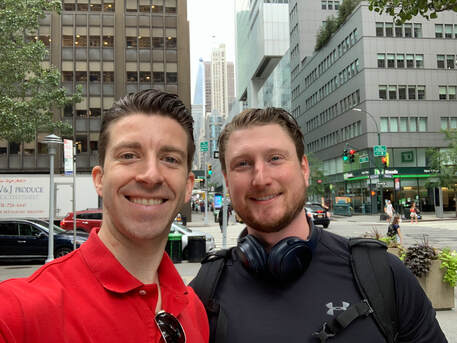
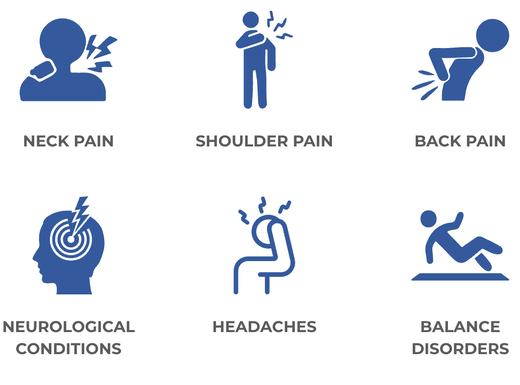
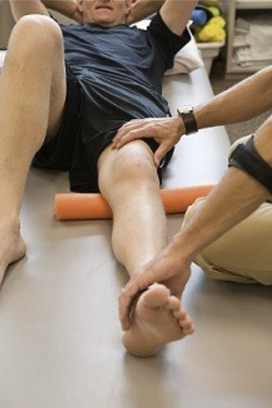
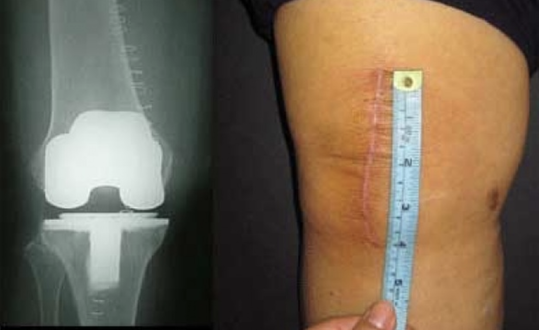
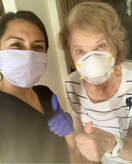

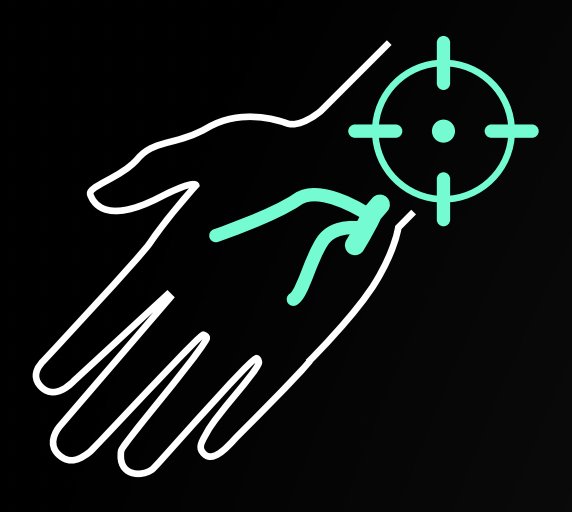
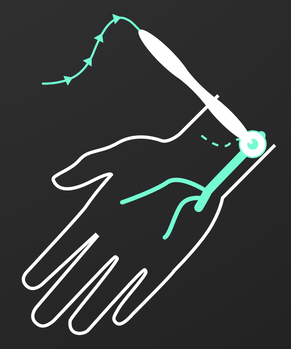
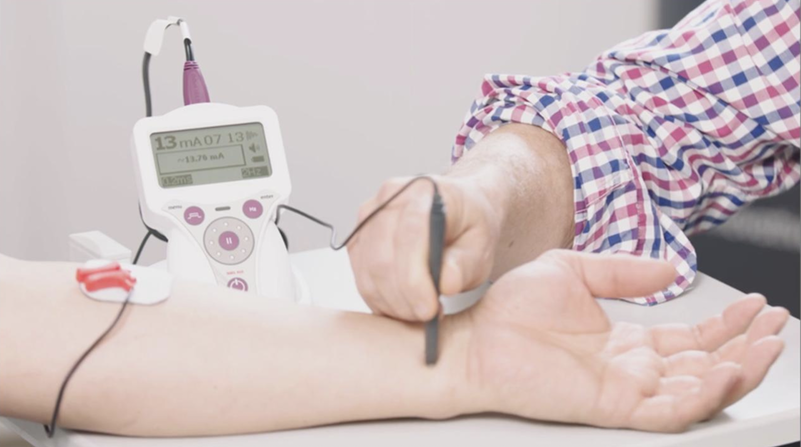
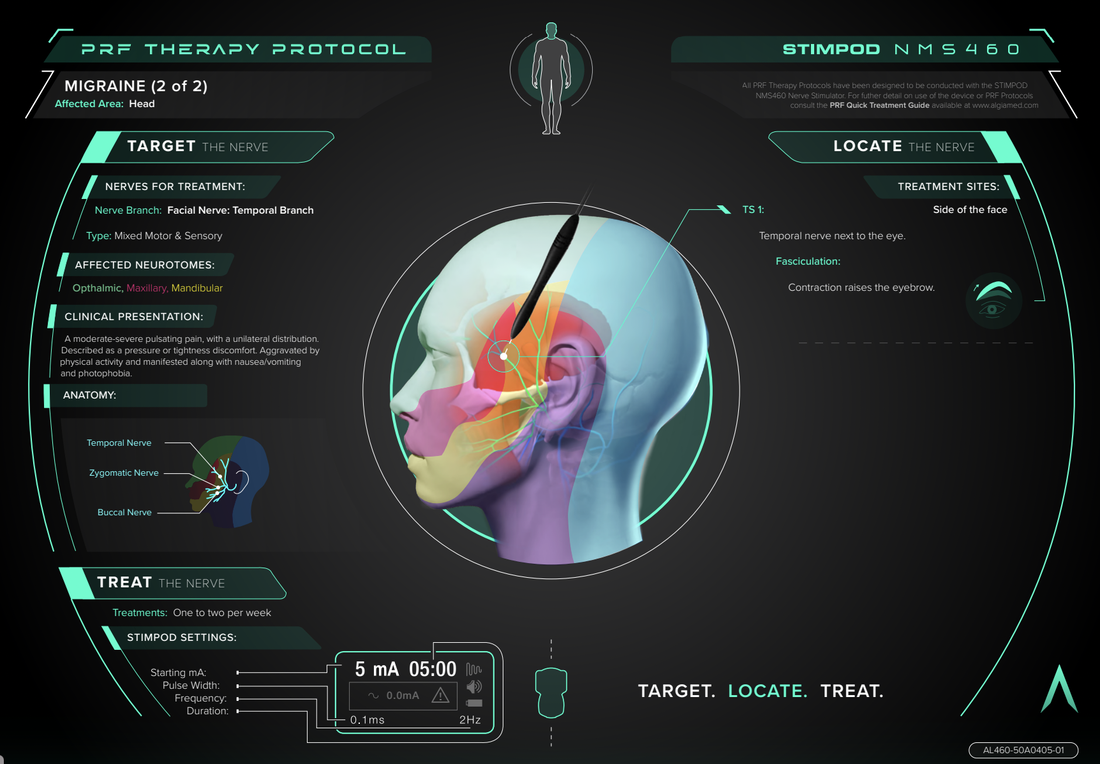
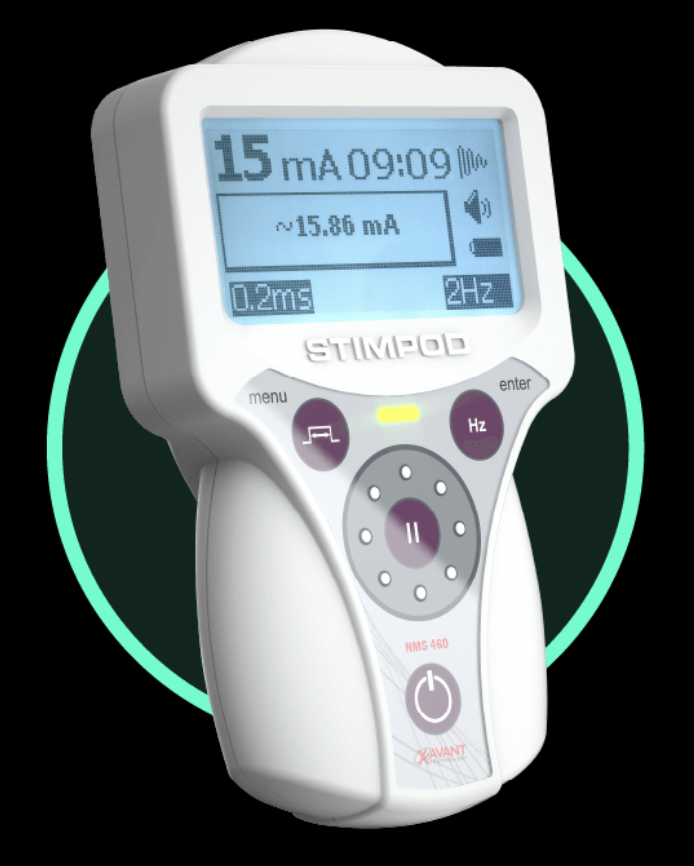
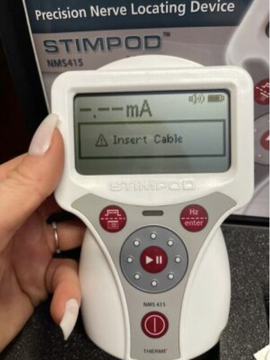
 RSS Feed
RSS Feed